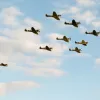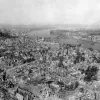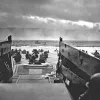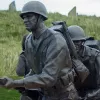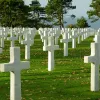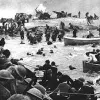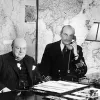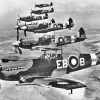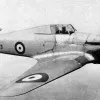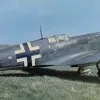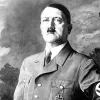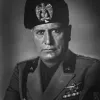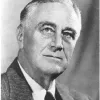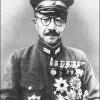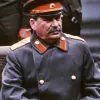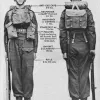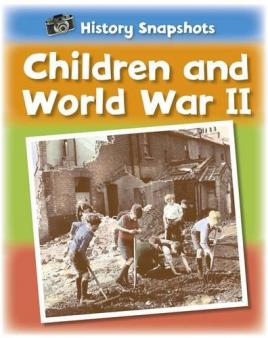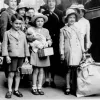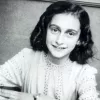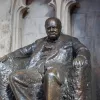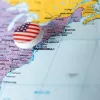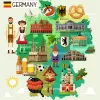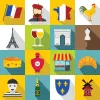Important update from TheSchoolRun
For the past 13 years, TheSchoolRun has been run by a small team of mums working from home, dedicated to providing quality educational resources to primary school parents. Unfortunately, rising supplier costs and falling revenue have made it impossible for us to continue operating, and we’ve had to make the difficult decision to close. The good news: We’ve arranged for another educational provider to take over many of our resources. These will be hosted on a new portal, where the content will be updated and expanded to support your child’s learning.
What this means for subscribers:
- Your subscription is still active, and for now, you can keep using the website as normal — just log in with your usual details to access all our articles and resources*.
- In a few months, all resources will move to the new portal. You’ll continue to have access there until your subscription ends. We’ll send you full details nearer the time.
- As a thank you for your support, we’ll also be sending you 16 primary school eBooks (worth £108.84) to download and keep.
A few changes to be aware of:
- The Learning Journey weekly email has ended, but your child’s plan will still be updated on your dashboard each Monday. Just log in to see the recommended worksheets.
- The 11+ weekly emails have now ended. We sent you all the remaining emails in the series at the end of March — please check your inbox (and spam folder) if you haven’t seen them. You can also follow the full programme here: 11+ Learning Journey.
If you have any questions, please contact us at enquiries@theschoolrun.com. Thank you for being part of our journey it’s been a privilege to support your family’s learning.
*If you need to reset your password, it will still work as usual. Please check your spam folder if the reset email doesn’t appear in your inbox.
World War II
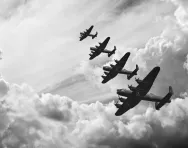
What was World War II?
World War II involved many countries around the globe fighting against each other, including the UK. It lasted six years, from 1939-1945.
The War became a global conflict after the German military, led by Adolf Hitler, invaded Poland in 1939 because he wanted to take some of their land for Germany. France and Britain declared war on Germany because they didn’t think what Germany was doing was right, then Italy joined with Germany, and gradually other countries in Europe and around the world became involved with either the Allies or the Axis powers.
Life during the Second World War was very difficult. Today, we mark special days to remember the many millions of people who fought and died during World War II.
Top 10 facts
- World War II lasted from 1939 to 1945.
- World War II began when German troops invaded Poland on 1 September 1939.
- The UK declared war on Germany on 3 September 1939. It was announced by Prime Minister Neville Chamberlain.
- While many countries were involved in the war, they each took sides – either with the Allies, or the Axis.
- The main Axis countries were Germany, Italy and Japan.
- The main Allied countries were Great Britain, the United States, France and the Soviet Union (Russia).
- British Prime Ministers during World War II were Neville Chamberlain until 1940, then Winston Churchill.
- The Battle of Britain, between the German Luftwaffe and the Royal Air Force, was the first ever battle to be fought only in the air. It was made up of lots of air battles that lasted from 10 July to 31 October 1940.
- World War II ended in Europe on 8 May 1945 – this is also known as VE Day (Victory in Europe Day).
- World War II carried on for a few months after it ended in Europe, and officially ended when Japan formally surrendered to the Allies on 2 September 1945 (also called VJ Day).
Timeline
- 1 September 1939Germany invaded Poland
- 3 September 1939The UK and France declared War on Germany
- 10 May 1940Winston Churchill became Prime Minister of Britain, taking over from Neville Chamberlain

- 14 May 1940The Home Guard was created (The Local Defence Volunteers)
- 26 May-4 June 1940The evacuation of British and French troops from Dunkirk, France
- June 1940German troops occupied the Channel Islands.
- 10 June 1940Italy declared war on Britain and France, and allies with Germany
- 10 July-31 October 1940The Battle of Britain
- 7 September 1940The Blitz begins in London
- 8 September 1941-27 January 1944The Siege of Leningrad
- 7 December 1941The Japanese attacked an American naval base at Pearl Harbor, Hawaii
- 8 December 1941The United States declared war on Japan, and joined with the Allies
- 6 June 1944D-Day, when troops from Britain and the US landed in France to fight against the Germans
- 16 December 1944-25 January 1945The Battle of the Bulge
- 8 May 1945VE Day (Victory in Europe Day), when Germany surrendered
- 15 August 1945VJ Day (Victory in Japan Day), when Japan surrendered
- 2 September 1945Japan formally surrendered, and officially ended World War II


Boost Your Child's Learning Today!
- Start your child on a tailored learning plan
- Maths & English resources added each week to your plan
- Keep your child's learning on track and watch their confidence grow!
Did you know?
- Even though World War II involved countries all over the globe, there were two sides fighting against each other – the Axis powers and the Allied powers.
- The UK was part of the Allies.
- Two types of aeroplane were used in the Battle of Britain – bombers that dropped bombs on towns and cities and fighters that attacked other aeroplanes.
- The main aeroplanes flown by the RAF were fighters called the Spitfire and the Hurricane. They tried to destroy German bombers before they could attack British towns and cities.
- The Luftwaffe (Germany’s air force) used both bombers and fighters. They used the bombers to attack towns and cities, and the fighters to stop the RAF fighters from destroying German bombers.
- The German’s most famous fighter aeroplane was the Messerschmitt and their main bombers were the Heinkel, the Junkers and the Dornier.
- British Prime Minister Winston Churchill, US President Franklin Roosevelt and Soviet Union leader Joseph Stalin were known as the ‘big three’. They were all leaders of Allied countries.
- The Siege of Leningrad – when all the roads going in and out of Leningrad were closed off so nobody could come in or go out, even to get food – lasted for 900 days (about two and a half years).
- The code name for D-Day was ‘Operation Overlord’.
- D-Day is a name the military use when planning an event – the ‘D’ doesn’t stand for anything.
- The code name for the evacuation of Allied troops from Dunkirk was ‘Operation Dynamo’.
- Hitler’s plan to invade Britain in the summer of 1940 was called ‘Operation Sea Lion’.
Browse through the gallery and see if you can spot the following:
- Spitfire planes
- The bombing of Cologne in Germany
- Omaha Beach in Normandy
- A D-Day commemorative statue
- Soldiers' graves in Normandy
- The evacuation of troops from Dunkirk
- Winston Churchill during WWII
- Neville Chamberlain declaring war on Germany
- Supermarine Spitfire aeroplanes
- Hawker Hurricane aeroplane
- A Luftwaffe aeroplane
- Adolf Hitler
- Benito Mussolini
- Franklin D Roosevelt
- Hideki Tojo
- Joseph Stalin
- World War II British Army uniform
Gallery
About
The main countries and leaders that made up the Allied powers were:
- Great Britain – led by Prime Minister Winston Churchill
- The United States – led by President Franklin D Roosevelt
- France – led by Charles de Gaulle
- The Soviet Union – led by Joseph Stalin
- China – led by Chiang Kai-shek
The three main countries and leaders that made up the Axis powers were:
- Germany – the Nazis, led by Adolf Hitler
- Italy – the Fascists, led by Benito Mussolini
- Japan – known at that time as the Empire of Japan, led by Hideki Tojo; the emperor of Japan during World War II was Emperor Hirohito.
World War II began when the UK and France declared war on Germany, after German troops led by Adolf Hitler had invaded Poland on 1 September 1939 to claim land there as their own. Hitler had already invaded Austria and Czechoslovakia, so the war began over his plan to take more land for Germany.
The Siege of Leningrad is a famous event during World War II. For 900 days – from 8 September 1941 to 27 January 1944 – the city of Leningrad in Russia was surrounded by German troops. That meant everyone inside the city had to stay there, and that there wasn’t any way for food or other provisions like medicine to get in. Many hundreds of thousands of people died during this time (600,000-800,000) because there wasn’t enough food or heating to go around, but the people who lived in Leningrad refused to surrender to the Germans.
In 1940, the French port of Dunkirk was the location of a big turning point for the Allies in World War II. Hitler’s armies bombed Dunkirk heavily, and many Allied troops were waiting on the beach to be rescued because they didn’t have the resources they needed to fight back. From 26 May to 4 June, over 550,000 troops were ferried to safety across the English Channel – the code name for this was ‘Operation Dynamo’. Some British civilians (people who weren’t in the army) even used their own boats to help save as many people as they could. The rescue operation helped to boost morale in Britain, where they really needed some good news. This helped in going into the next major event in World War II, the Battle of Britain.
The Royal Air Force were the stars of the Battle of Britain, which is the first military battle to be fought entirely in the air. In ‘Operation Sea Lion’, Hitler planned to invade Britain and add another country to his list of conquests. But, first he had to fight off the RAF, which is where he ran into trouble. Britain’s RAF beat Germany’s Luftwaffe, but after a long series of battles from 10 July-31 October 1940. The whole thing is called the Battle of Britain because it’s what made Hitler eventually change his mind about trying to invade the UK, and he went after Russia instead. The RAF pilots showed tremendous courage and bravery as they kept fighting the Luftwaffe even when it looked like they might lose.
June 6, 1944 is also known as D-Day. On that day, the Allied forces launched a huge invasion of land that Adolf Hitler’s Nazi troops had taken over. It all began with boats and boats full of Allied troops landing on beaches in the French region of Normandy. They broke through the German defences and carried on fighting them back through Europe for the next 11 months until they reached Berlin, where Hitler was then hiding.
The Battle of the Bulge took place from 16 December 1944-25 January 1945, and was the last major effort by Hitler to defeat the Allies. He had hoped to break up the parts of Western Europe that the British, American and French troops secured by splitting the area in half – this would mean that the armies wouldn’t be able to get supplies across to each other, and would make them easier targets for Hitler and his armies to fight against. But, all Hitler did was to make the Allied line of troops ‘bulge’ in the middle as he fought to push them back, and the line didn’t break completely. So, he didn’t accomplish his goal, and the Allies won the battle.
Names to know
Neville Chamberlain (1869-1940) – British Prime Minister from 1937-1940; Chamberlain was Prime Minister when Britain declared war on Germany.
Winston Churchill (1874-1965) – British Prime Minster from 1940 to 1945, then again from 1951 to 1955; Churchill was Prime Minister during most of World War II. Churchill is famous for his speeches that inspired people to keep on fighting.
Adolf Hitler (1889-1945) – German dictator during World War II, and leader of the Nazi political party
Benito Mussolini (1883-1945) – Italian dictator during World War II, and leader of the Fascists; Mussolini was also known as ‘Il Duce’ (‘the leader’), and joined forces with Hitler as one of the Axis powers.
Franklin D Roosevelt (1882-1945) – United States President during most of World War II
Joseph Stalin (1878-1953) – leader of the Soviet Union during World War II
Hideki Tojo (1884-1948) – Japanese leader and military general during World War II
Related Videos
Just for fun...
- Learn to sing songs that were popular during WWII, including 'White Cliffs of Dover' and 'Everything stops for tea'
- Use interactive maps to see the battles of WWII in Europe, Africa and Asia
- Take a WWII quiz
- Design the interior of an Anderson Shelter and try some WWII craft activity ideas with the Biggin Hill Memorial Museum Armchair Explorers Activities
- Watch the Horrible Histories song about WWII pilots, The RAF Pilots - The Few Song
- See a Battle of Britain dogfight in action and find out about Britain's pilots in a BBC interactive guide to the "secret" of winning the Battle of Britain
Children's books about World War II
Find out more:
- A series of BBC films about WWII for KS2 children offers a comprehensive overview of World War Two for primary schools
- Watch a brief video overview of the Second World War
- Read about the 5 phases of WWII
- 10 facts about WWII from National Geographic Kids
- Watch WWII video clips from the BBC archive and find out more about evacuation, the Blitz, rationing, famous WWII songs, news reports, speeches and eye-witness accounts
- A children's guide to WWII from DKfindout!
- Interactive articles and timelines about the major events and people of World War Two
- Video information about rise of the Nazis
- Read a BBC Bitesize summary of WWII
- A complete BBC interactive timeline of WWII, including videos of key events
- Maps, investigations and individual sources about WWII from the National Archives
- Look at an interactive map of the world and events during World War II
- Watch short BBC films about the significance of D-Day, the biggest air and seaborne invasion in history
- Understand more about D-Day: look through information sources about D-Day and read a D-Day guide from the National Army Museum
- The CBBC guide to D-Day
- See photographs of the Dunkirk evacuations
- Read about what people who lived during World War II remember from those difficult years at the website ‘The People’s War’
- Find out about 9 iconic aircraft from Battle of Britain, including the Spitfire and the Hawker Hurricane
- A detailed guide to the Spitfire, the most famous plane of World War Two
- Find out about all the different types of World War II defences (called pillboxes) that you can still see around Britain
- Watch a Newsround introduction to the Holocaust
- The life and times of Winston Churchill, and how Churchill's speeches (and his dentures!) contributed to the war effort
- Read about life during WWII in kids' historical fiction set during the Second World War
- Nathalie Sergueiew, 'Treasure', was a WWII spy
- Look through photos of Victory in Europe (VE) Day celebrations
See for yourself
- See exhibits from the Battle of Britain and the Blitz at the RAF Museum in London. You can even climb into a Spitfire and experience what it would have been like to fly one!
- Take a tour of the HMS Belfast, one of the ships used to ferry troops to Normandy on D-Day
- See the aeroplanes involved in the Battle of Britain, inside on of the hangars that was actually used in 1940, at the Imperial War Museum in Duxford
- Walk through the Cabinet War Rooms, which were located underground so Winston Churchill and other leaders could kept safe during the Blitz and hold top security meetings
- Britain built thousands of defensive structures called Pill Boxes all over the country that soldiers could use to defend the country if the Germans invaded. Are there any near where you live?
- Find out about code-breaking at Bletchley Park
- See and find out about objects from World War II
- Hear all the sounds of WWII: Chamberlain and Churchill's speeches, WWII songs and music, news as it was reported in 1939-1945
